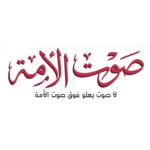|
Getting your Trinity Audio player ready...
|
Part 2 | Alarms on the Lebanese-Israeli Border Might be Last Wake Up Call for Western Leaders
In Part 1 of this Article, I explained and contextualized the events of September 1 on the Israeli Lebanese border. I ended the article by saying the following:
“It is likely that yesterday’s short round between Israel and Hezbollah might be the last wake-up call for Western leaders. It should be clear that the potential for a severe, rapid escalation leading to a total war continues to escalate – even if punctuated by rounds of calm.”
With your permission, I would like to take a moment to zoom out to help us gain a better understanding of events today. With this background, we will be able to understand what can be done to ensure stability and prevent an Israeli Hezbollah war, which can quickly evolve into a much larger war.
I want to begin by reiterating something I said in the last article. Iran is determined to create a “The Shi’ite Crescent” in order to expand its control in the region and to become the regional superpower.
Understanding the threat of Iran’s hegemonic vision – a “Shiite Crescent” – which is an Iranian-controlled region stretching from Lebanon through Syria, Iraq, Iran, the Arab (Persian) Gulf, and Yemen requires some historical framing.
Two Axes of an Historic Struggle have played – and continue to play – a Central Role in the History and the Current Reality of the Middle East
One axis is the struggle between Sunnis and Shi’ites in Islam centered around the question of “Who is entitled to lead the Muslim world?” The majority of Muslims are Sunnis. Sunni Muslims believe that leading the Muslim world is not about bloodline or dynasty; it’s about the most skilled person for the position. The word “Sunna” in Arabic means “the path.” About twenty percent of the Muslims in the world are Shi’ite. The word Shi’a in Arabic comes from the term Shi’at Ali – “The Faction of Ali.” Shi’ites argue that the leader of the Muslim world must be a male descendant of Ali. Ali was the fourth Caliph (ruler) of the Islamic Caliphate, and he was the ruler of the Muslim world from 656 to 661 CE. Ali was the son-in-law and cousin of the Prophet Mohammad. He had nine wives and 21 children. His first wife was Fatimah, Mohammad’s daughter. Ali was murdered in the year 661 CE. After his death, Ali and Fatima’s eldest son, Hasan, abdicated the throne (and was later assassinated). Their younger son, Al-Husayn – the last male grandson of Prophet Mohammad, demanded the position, challenging the ruler of the Caliphate at that time, Yazid ibn Muawiyah ibn Sufyan. The struggle for control soon became violent. And in the year 680 CE, Al-Husayn, his family, and his supporters were killed in a battle against the Yazid army in the region of Karbala (Iraq of our times). Al Husayn ibn Ali became a symbol of tortured sainthood within the Shi’a faith. He is referred to as “the Master Martyr” by Shi’ites. The slaughter at Karbala is the cornerstone of the Shi’ites. The struggle between Sunni Islam and Shi’ite Islam is one of the key factors that has shaped regional history. An abyss of hostility, differing ideological and theological opinions, political clashes and mutual violence has divided Sunni and Shiite Islam for more than 1300 years.
The second axis, which has played a role in the shaping of the region is the rivalry between two large regional civilizations. The Arab civilization – predominately Sunni Muslims on the one hand. And the Persian civilization – predominantly Shi’ite Muslims on the other side. Hundreds of years of political, military, and cultural rivalry have characterized the relations between these two civilizations.
***
The Rise to Power of the Mullah Regime in Iran in 1979 Marked a Significant Milestone in the History of the Sunni-Shi’ite Arab-Persian Power Struggle
The core value of the Iranian Mullah regime, which is embedded in the Iranian Constitution is “Exporting the Islamic Revolution.” The goal of “Exporting the Islamic Revolution” is to ensure that Iran becomes the dominant Superpower in the Middle East.
Driven and guided by that concept, the Mullah regime pursues an aggressive expansion policy to create a secure an Iranian-controlled region stretching from Lebanon through Syria, Iraq, Iran, the Arab (Persian) Gulf, to Yemen – the “Shi’ite Crescent.”
In the eyes of the Mullah regime, achieving regional dominance will right the historical wrong. And will restore justice and honor to the Shi’ites who – according to their narrative – were denied the crown of leading the Muslim world when al-Husayn Bin Ali killed in 681 CE.
Eight Active Arenas of The Sunni Shi’ite Arab Persian Power Struggle
The result of the Mullah regime’s quest to be the regional Superpower is a massive power struggle spread into eight active arenas between Iran and its proxies on the one hand, and the Arab states in general and the Arab Gulf Monarchies in particular – led by Saudi Arabia, on the other side.
These eight arenas are:
Three Islands in the Gulf near the Strait of Hormuz (Abu Musa, Lesser Tomb, and Greater Tomb); Bahrain, Yemen, Iraq, Syria, Lebanon, the Gaza Strip, and the Iranian Nuclear Project.
Today most senior leaders of the Iranian regime openly brag that Iran controls four Arab state capitals – Beirut, Damascus, Baghdad, and Sana’a. They threaten to eliminate the Saudi Monarchy and vow to eliminate the state of Israel.
The Iranian regime’s regional hegemonic vision causes death and destruction throughout the Middle East. To stop the Mullah regime, the West must accurately identify the modus operandi of the Iranian regime and apply a multi-faceted strategy. There is no simple solution, and there is no “magic bullet.”
***
I would now like to outline the Iranian modus operandi and how it helps them fulfill their hegemonic vision. We will then evaluate the success of their strategy.
The Mullah Regime’s Modus Operandi is based on Five Pillars:
1. Concentrating their efforts on areas critical to realizing their vision of an Iranian-controlled Shi’ite Crescent. They particularly focus on the region spanning from Lebanon, through Syria, Iraq, the Persian (Arab) Gulf, Yemen, to the Red Sea.
2. Taking advantage of weakness & instability. All of the above countries suffer from weak governments, political instability, power struggles, and ethnic tensions. This environment enables Iran to deepen its involvement and influence. In each of the arenas, the Mullah regime has capitalized on all these weaknesses to foment more chaos.
3. Using Agents & Proxies. The most important and powerful mechanism Iran uses to expand its control and influence and entrench itself as the de facto ruling power are proxies and agents who are massively armed and financed by Iran.
Proxies are non-Iranian militias established, armed and funded by the Iranian regime. Proxies like the Hezbollah in Lebanon or some of the Iraqi Shi’ite militias Iran has created serve Iran almost blindly.
Agents are already existing non-Iranian entities Iran believes can help the regime achieve its goals. Agents such as are Hamas and the Palestinian Islamic Jihad in the Gaza Strip and the Houthis in Yemen agents serve Iran out of shared common interests.
4. Fueling the flames of the Israeli – Palestinian conflict. The Iranian regime identified the centrality of the Israeli-Palestinian conflict in the hearts and minds of the Arab world. They positioned themselves as the defenders of the Palestinians, and to that end built a network of operational proxies and agents in Lebanon, Syria and the Gaza Strip. This network is known as the “Axis of Resistance.” In the modern dictionary of the Middle East the word Resistance – in Arabic – Al-Muqawama, is a term that is the code word for the destruction of the State of Israel through violence. Fueling the flames of the Israeli-Palestinian conflict serves the Mullah’s hegemonic vision.
5. Money Buys Power. The primary way the Iranian regime deepens its influence in these arenas is through financing its agents and proxies. The income sources Iran uses to do this are primarily Iranian oil and gas revenues.
The money Iran provides is intended for two purposes:
To fund weapons, arms, and ammunition. And to recruit, pay, and support militants.
To provide agents and proxies enough money to actually create their own sub-economies, thereby providing education, social services, welfare services, etc. In weak, fledgling and disintegrating States, the proxies and agents gain political power and public support through providing what the state and official agencies and entities cannot. And the more the state implodes, the better it is for the Iranians.
As of 2019, the Mullah Regime’s Strategy Can Mark Substantial Achievements in Securing Control of the Shi’ite Crescent
YEMEN
In Yemen, Iran capitalizes on the internal power struggle between the various Yemenite tribes – all of whom vie for power. In September 2014, the Iranian-backed Houthis Shi’ite tribes conducted a military coup, ousting the Yemenite government.
Yemen is located at one of the most strategic and sensitive points in the world. The Bab el-Mandeb Strait, located between Yemen and the Djibouti and Eritrea, is the chokepoint between the Horn of Africa and the Middle East, and the link of the Mediterranean Sea and the Indian Ocean. Whoever controls this area wields enormous power over trade, commerce, the flow of oil, etc. It is one of Iran’s strategic goals to control this area.
The Houthis threaten the traffic in the Red Sea and use Iranian-made drones and missiles to attack Saudi Arabian cities, infrastructure, and oil fields. The ability of the Houthis to threaten maritime traffic in the Red Sea, and to attack Saudi Arabia at will, provides Iran with strategic bargaining chips.
IRAQ
The ethnic power struggle, the Sunni – Shiite power struggle, and the chaos that began to grip Iraq following the ousting of Saddam Hussein (2003) provided fertile ground for Iran to begin to cultivate alliances in Iraq. The emergence of ISIS in 2013 was a golden opportunity for Iran to establish a military presence in Iraq.
On June 10, 2014, ISIS defeated the Iraqi army in Mosul – the 2nd largest city in Iraq. In response, Grand Ayatollah’ Ali al-Sistani – the most powerful and influential Iraqi Shi’ite Cleric in Iraq, issued a Fatwah (a religious ordinance) – Fatwah Fard Kifayah Jihad. This Fatwah called upon everyone to make a collective effort to defeat ISIS. Al-Sistani’s Fatwah urged every Iraqi capable of fighting to take up arms to defeat ISIS forces in Iraqi territory. Al-Sistani’s Fatwah laid the foundation for the establishment of what will become the PMU.
In November 2016, the Iraqi Parliament (except for the Sunni delegates who did not attend the vote in protest) approved a law formally creating an Iraqi military force called Al-Hashd Al-Sha’abi – The Popular Mobilization Units (PMU). The law made Al-Hashd Al-Sha’abi (PMU) a legitimate and official military force, operating in parallel to the Iraqi armed forces, and under the control and command of the Iraqi government. Iranian Revolutionary Guards (IRG) train and command PMU major militias, fighting together to defeat ISIS. Today the PMU consists of some 70 Iraqi (mostly Shi’ite) paramilitary militias numbering between 40,000 and 160,000 militants. The most powerful Shi’ite militias of the Iraqi PMU are Iran proxies.
In addition to its military presence in Iraq, Iran also cultivates Iraqi politicians who are in favor of Iranian intervention in Iraq. Today, the second largest political camp in Iraq known as Al-Fath (“The Triumph”) Coalition is composed of political parties and politicians affiliated with Iran.
Iraq is very significant for Iran. The majority of Iraq Arabs are Shi’ites. The holiest Shi’ite shrines are in southern Iraq. Iraqi consumers are a significant audience for Iranian commodities. Iraq and Iran share sprawling oil fields. Iran provides southern Iraq with electricity. Southern Iraq is, to a large extent an Iranian protectorate.
Iran has established in Iraq a political and military power base that enables the Mullah regime to dictate Baghdad’s domestic and foreign policy to further Iranian interests.
Iraq is a critical element in Iran’s hegemonic mission. One of the cornerstones of Iran’s strategy to become the regional Superpower is to establish and control an Iranian-controlled land corridor that stretches all the way from Iran to the Mediterranean Sea. Securing this land bridge will enable Iran to freely and easily stream weapons and militants from Iran to Syria. The corridor will tighten the regime’s grip on Syria and Lebanon. And will furthermore, establish a military infrastructure that in time will be used to fulfill one of Iran’s missions – the elimination of Israel.
SYRIA
Bashar al- Assad, the President of Syria, is an Alawite (the Alawites are a small minority in Syria and considered as a distant branch of the Shi’ites) in a mostly Sunni country. Damascus serves as the center of the Iranian-backed Axis of Resistance. Iranian weapons shipments to Hezbollah crossed through Syria; militants of Hezbollah, Hamas, Islamic Jihad trained in Syria. Damascus is a crucial linchpin in Iran’s hegemonic ambitions.
When the civil unrest in Syria evolved into a war in the summer of 2011, Iran became concerned that all it had invested in Syria to achieve regional domination was at risk. In the fall of 2011, when it seemed that the Syrian rebel forces were gaining the upper hand and that the Assad regime was collapsing, alarm bells went off in Tehran. Iran then ordered its most powerful proxy – the Lebanese Hezbollah, to send its forces into Syria to save the regime and Assad himself.
As the war in Syria continued, and Sunni Militant Islamic groups like ISIS, Al-Qaeda d others streamed into Syria. The domestic Civil War in Syria turned into a full-blown Sunni-Shi’ite Arab-Persian war. Upon Bashar al Assad’s “invitation”, Iran went to Syria “to fight terror.” Under that slogan, Iran has sent dozens of thousands of Shi’ite militias – Afghans, Iraqi, Pakistani, as well as Lebanese Hezbollah militants into Syria – all of whom are supported, armed and guided by the Iranian Revolutionary Guards (IRG).
The Iran-Assad-Russia axis is determined to maintain its rule over Syria. To that end, they have destroyed Syria, murdered hundreds of thousands of Syrians, expelled and forcefully displaced entire Syrian Sunni communities, and created millions of Syrian refugees.
Today Iran and its proxies physically occupy and control part of Syria, and the Mullah regime is proactively attempting to expand its military and economic control. Syria is the last element of the corridor before Lebanon.
To complete the land bridge, secure their control from Iran to the Mediterranean, and become the Superpower in the Middle East, Iran must control Syria.
LEBANON
In the early 1980s, in Lebanon, under the slogan of “The Resistance,” Iran created what will become its most important operational proxy – Hezbollah. The Iranians identified and capitalized on the fact that the Shi’ites are the largest sect in Lebanon (over a quarter of the population), that Lebanon suffers from a weak government, chronic political instability, power struggles, and ethnic tensions, and that Israel occupied parts of Lebanon from 1982-2000.
Iran provides Hezbollah with yearly financial support estimated at USD 700 million. In addition, the regime provides its proxy with the most advanced military training and massive amounts of technologically advanced weapons. Including, according to estimations, more than 130,000 thousand rockets and missiles aimed at Israel. Over the past two decades, Hezbollah dug border-crossing tunnels from Lebanon into communities in northern Israel. And over the past few years, under Iran’s guidance and support, Hezbollah has been working on developing a high precision missile project in Lebanon.
The massive investment Iran has made in Hezbollah has paid off very well for the Mullah regime. Under Iran’s direction, Hezbollah kidnapped Lebanon in the most simple and effective way – terror and the use of brutal force.
In 2000 when the Israeli army withdrew from Lebanon, the Lebanese government asked Hezbollah to give up its weapons and disarm itself. Hezbollah refused. They claimed their weapons are part of the Resistance against Israel and are therefore untouchable.
In 2005, Lebanese Prime Minister Rafiq al-Hariri was assassinated. The International Tribunal (STL) set up by the United Nations Security Council to investigate the murder gathered conclusive evidence linking Hezbollah to murder of the late Prime Minister.
In 2006, Hezbollah initiated a war against Israel that caused major destruction in Lebanon.
In 2008, the Lebanese government demanded Hezbollah stop developing a communication infrastructure financed by Iran. In response, Hezbollah conquered Beirut, killing dozens of Lebanese.
In 2011 – under Iranian orders, Hezbollah sent militants into Syria to save Assad and secure Iran’s control of Syria. Thus independently – against the Lebanese government’s decision – dragging Lebanon into the war in Syria violating the Lebanese government’s neutrality policy vis a vis that war.
By kidnapping Lebanon, Hezbollah provides Iran a strategic base on the shores of the Mediterranean – also bordering Israel.
THE GAZA STRIP
From a population perspective, the Gaza Strip, located southwest of Israel differs from any of the above arenas. The 2,000,000 Palestinians who live in the Gaza Strip are Sunni. Under the slogan of “The Resistance,” Iran sponsors and arms Gaza-based militant Palestinian organizations, such as Hamas and the Palestinian Islamic Jihad (PIJ).
Hamas in Arabic means “religious enthusiasm,” and it is also the initials of Harakat al-Muqawama al-Islamiyya – The Islamic Resistance Movement. In the summer of 2007, Hamas took over the Gaza Strip violently terminating the rule of the Palestinian Authority who ruled Gaza at the time. Hamas justified its coup by saying that the PA had abandoned the path of the Resistance. Palestinian Islamic Jihad (PIJ) is the second most powerful military power in Gaza. Like Hamas, it vows to eliminate Israel through the use of violence. Both Hamas and PIJ are backed and supported and by Iran.
Since 2007, two of Iran’s agents in the Gaza Strip – Hamas and the Palestinian Islamic Jihad, have escalated their attacks against Israel. As a result of the growing violence, thousands of Palestinians and hundreds of Israelis have been killed, and major destruction has occurred mainly in Gaza.
While the PIJ is entirely loyal to Iran, the relationship between Hamas and Iran is more complicated.
In 2012, as the war in Syria expanded, Hamas distanced itself from the Assad – Iran axis, because Syrians are predominately Sunni. And as a Sunni entity, Hamas had to decide which side of the war to take. Did they want to side with the Iranian-Assad axis which was slaughtering Sunni Syrians (including Palestinians in Syria) at will? Or did they want to distance themselves from the Iranians to show their loyalty to the overwhelmingly Sunni Arab world which is Hamas’ natural home. Hamas chose to leave Damascus. Iran retaliated Hamas by cutting its support to the Hamas government in Gaza, but the regime continued to support Hamas’ military force the Izz ad-Din al-Qassam Brigades.
As of 2019 the relationship between Hamas and Iran are apparently back on track. A Hamas senior delegation recently met with Iran’s Supreme Leader Ali Khamenei. In return for Iran’s forgiveness, and as Iranian – US tensions increase, Hamas’ Delegation leader to Iran, Saleh al-Arouri announced that Hamas is “the first defense line of the Muslim world including Iran.”
Influencing the Gaza Strip provides Iran with two significant achievements: Gaza is Iran’s third off-shore base to the Mediterranean Sea – the other two are Syria and Lebanon. And controlling Hamas and the PIJ in Gaza enables Iran to keep fueling the flames of the Israeli – Palestinian conflict.
***
Now that we Understand Iran’s Modus Operandi and the Current Landscape, We can Address the Following Questions
What needs to be one to thwart Iran’s hegemonic vision?
And why should it be the West’s top priority to immediately and resolutely address the very flammable situation, and defuse the ticking bomb of an Israeli – Hezbollah war?
I will focus on that- in the third and concluding part of this article.
CLICK HERE FOR PDF OF THIS ARTICLE
If you want to have a better understanding of the news and what really drives the unfolding events…
Read the latest book of Avi Melamed,
INSIDE THE MIDDLE EAST | ENTERING A NEW ERA, available now >>>
Follow me on Twitter @AviMelamed; Facebook @InsideTheMiddleEast; for more Videos on YouTube https://www.youtube.com/c/AviMelamed
I can always be reached at Av*@Av********.com































































